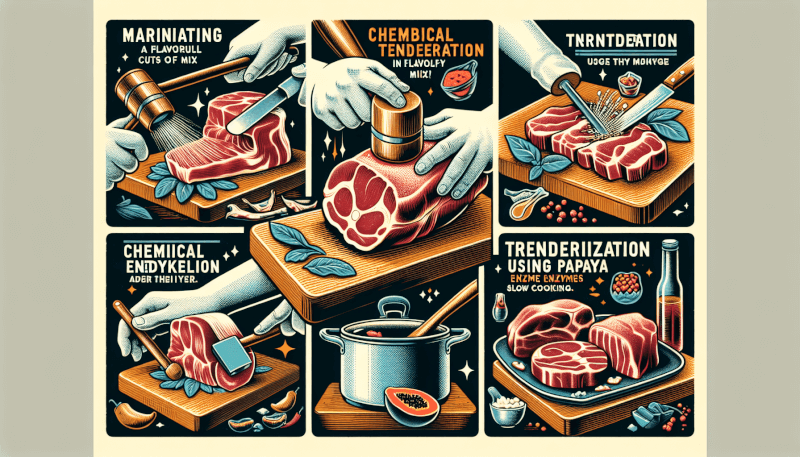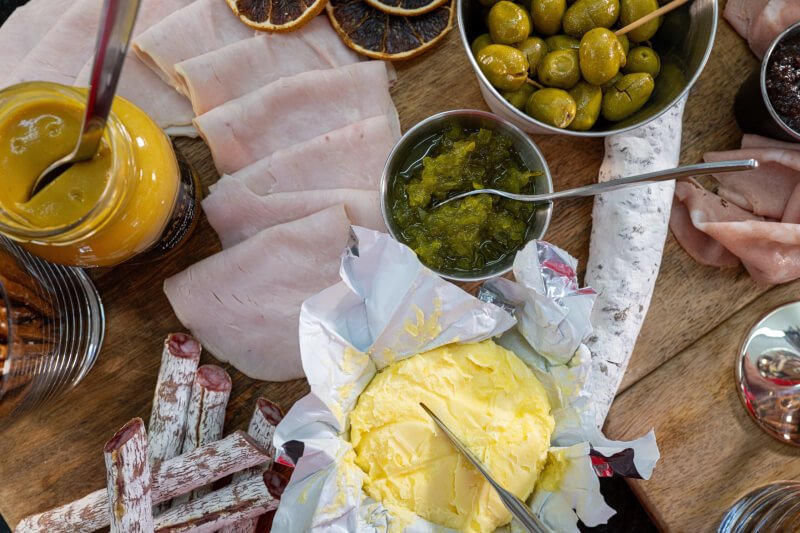If you’ve ever found yourself trying to figure out how to make a tough piece of meat mouthwateringly tender, you’re not alone. We’ve all been there, staring at a cut of meat that seems impossibly tough, wondering how to transform it into something delicious and juicy. Luckily, there are a few tried and true methods that can help you achieve tender perfection. From marinating to using a meat mallet, this article will guide you through the best ways to tenderize tough cuts of meat, ensuring that your next meal is a tender and flavorful delight.
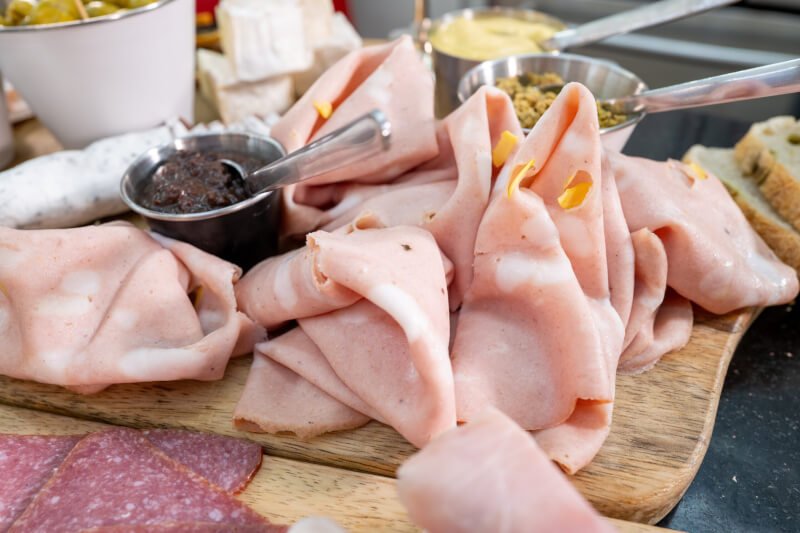
Understanding Tough Cuts of Meat
What are tough cuts of meat?
Tough cuts of meat refer to specific sections of an animal that are generally tougher and more chewy compared to other cuts. These cuts often come from muscles that have been exercised frequently during the animal’s life, resulting in more collagen and connective tissues. Examples of tough cuts of meat include chuck, brisket, shank, and flank.
Why are some cuts of meat tougher than others?
The tenderness of meat depends on several factors, such as the location of the muscle, the amount of connective tissue, and the animal’s age and diet. Muscles that are used more frequently, like the shoulder or legs, tend to be tougher due to the development of stronger connective tissues. Additionally, older animals may have more connective tissue and less fat, which can contribute to tougher meat.
Factors that contribute to the toughness of meat
Several factors can contribute to the toughness of meat:
-
Connective Tissues: Collagen, a type of connective tissue, is abundant in tough cuts of meat. When collagen breaks down during cooking, it transforms into gelatin, resulting in a more tender texture.
-
Muscle Fiber Size: Muscles with larger fiber sizes can be tougher as they require more effort to break down during cooking.
-
Fat Content: Higher fat content can add flavor and tenderness to meat. Lean cuts are generally tougher but can be tenderized using different cooking techniques.
-
Age of the Animal: As animals age, the connective tissue in their muscles becomes more prevalent, leading to tougher meat. Younger animals, such as veal or lamb, tend to provide more tender cuts.
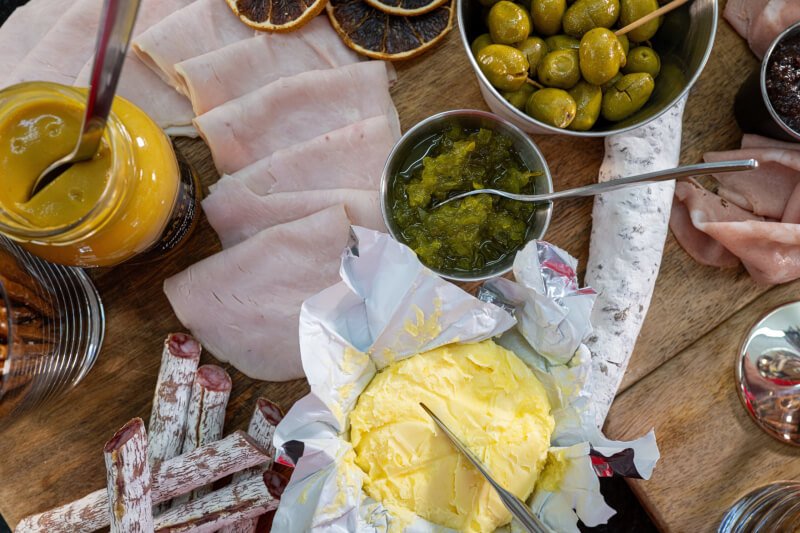
Methods for Tenderizing Tough Cuts of Meat
Marinating
Marinating involves soaking meat in a mixture of acidic or enzymatic liquids, spices, and herbs. The acidic components, such as citrus juices or vinegar, help break down proteins and tough fibers in the meat, improving tenderness and flavor. Enzymatic marinades, like those containing pineapple or papaya, use natural enzymes to tenderize the meat.
Pounding or Mechanical Tenderizing
Pounding or using a mechanical tenderizer can break down tough muscle fibers by physically tenderizing the meat. This method involves using a meat mallet or specialized tenderizing tools to flatten the meat, creating uniform thickness and breaking up connective tissue.
Brining
Brining is a process in which meat is soaked in a saltwater solution. The salt helps increase the meat’s moisture-holding capacity, resulting in a juicier and more tender final product. Brining also enhances the meat’s flavor by allowing the salt and other seasonings to penetrate deeply.
Using Enzyme-based Tenderizers
Enzyme-based tenderizers contain proteolytic enzymes, such as bromelain from pineapples or papain from papayas, that help break down proteins in the meat. These tenderizers are typically applied as a powder or liquid and are left on the meat for a specified period to allow the enzymes to work.
Slow Cooking
Slow cooking involves cooking meat at low temperatures over an extended period. This method allows the collagen and connective tissues to break down slowly, resulting in tender and flavorful meat. Slow cooking methods, such as braising or using a slow cooker, are ideal for tough cuts like beef chuck or pork shoulder.
Using a Pressure Cooker
A pressure cooker uses steam and high pressure to cook meat quickly and tenderly. By creating a sealed cooking environment, the pressure cooker raises the boiling point of water, leading to faster breakdown of collagen and connective tissues.
Dry Aging
Dry aging is a process that involves aging meat in a controlled environment with low humidity. During this process, natural enzymes in the meat break down connective tissue and moisture evaporates, intensifying the flavor of the meat. The result is a more tender and flavorful cut of meat.
Using a Meat Mallet
A meat mallet, also known as a tenderizer, is a simple tool used to physically tenderize the meat. By pounding the tougher cuts with the flat side of the mallet, the muscle fibers break down, resulting in a more tender texture. This method also helps flatten the meat for even cooking.
Braising
Braising is a cooking method that involves searing meat in hot oil and then slowly simmering it in a flavorful liquid, partially covered, until it becomes tender and flavorful. This method utilizes both dry heat and moist heat, allowing the collagen in the meat to break down gradually.
Using Meat Tenderizing Powders
Meat tenderizing powders, often made from papain or bromelain, are sprinkled directly onto the meat. These powders contain enzymes that break down proteins, resulting in tender meat. It is essential to follow the instructions on the packaging to ensure proper usage.
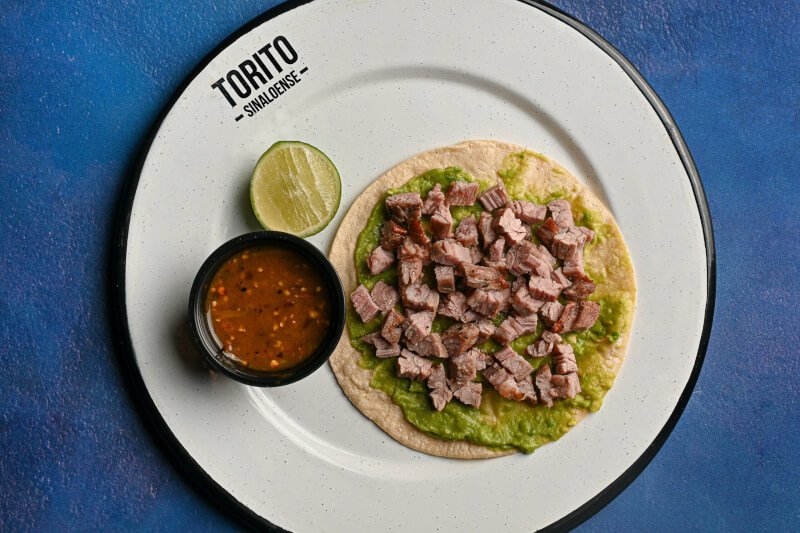
Marinating
How marinating works
Marinating works by using acidic or enzymatic ingredients to break down tough muscle fibers and proteins in the meat. The acid or enzymes soften the meat, resulting in increased tenderness and improved flavor.
Ideal time for marinating
The ideal marinating time depends on the type and thickness of the meat. Typically, marinating for at least 30 minutes allows enough time for the flavors to penetrate the surface of the meat. For tougher cuts of meat, marinating for several hours, or even overnight, can bring out better results.
Popular marinade ingredients
Marinades can consist of various ingredients, such as:
- Acidic components: Citrus juices (lemon, lime, orange), vinegar (balsamic, apple cider, red wine), or yogurt.
- Oils: Olive oil, vegetable oil, or sesame oil.
- Aromatics: Garlic, onions, herbs (thyme, rosemary, oregano), and spices (black pepper, paprika, cumin).
- Sweeteners: Honey, maple syrup, or brown sugar.
- Seasonings: Soy sauce, Worcestershire sauce, or fish sauce.
Tips for successful marinating
To ensure successful marinating:
- Pierce the meat with a fork or make shallow cuts to help the marinade penetrate the meat.
- Use a non-reactive container, such as glass or plastic, to marinate the meat.
- Refrigerate the meat while marinating to prevent bacterial growth.
- Avoid marinating meat for too long, as overly acidic or enzymatic marinades can result in a mushy texture.
- Discard any leftover marinade that has come into contact with raw meat to prevent cross-contamination.
Remember, marinating is only effective on the surface of the meat, so for particularly tough cuts, you may need to combine marinating with other tenderizing methods.
By understanding the nature of tough cuts of meat and implementing the appropriate tenderizing methods, you can turn even the toughest of meats into mouthwatering dishes. Experiment with different techniques and find the ones that work best for you. With some patience and a little culinary know-how, you’ll be enjoying tender, flavorful meals that will impress family and friends.
